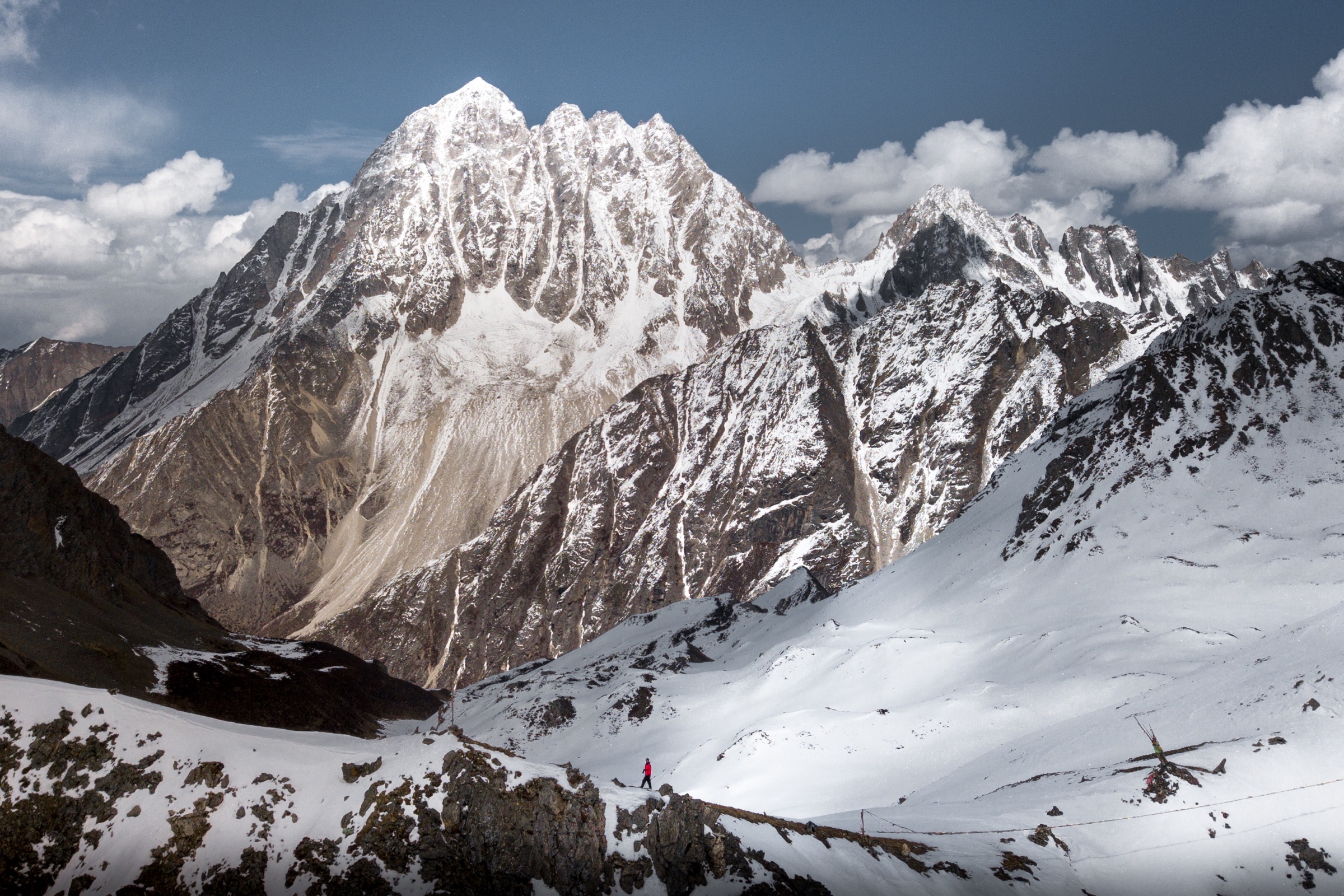Four years ago, a group of Chinese programmers, auditors, entrepreneurs, guides, photographers, and 128 others of all backgrounds embarked on a 63-day journey through the heart of China. They called themselves the “Hengduan Legion.” Their goal was to establish a route for China’s first ever thru-trail*, and place it right through one of China’s most important geographic, cultural, and ecological features: the Hengduan Mountains.
* There is no standard definition of a “thru-trail” or “thru-hike,” but generally they are end-to-end long-distance backpacking trips that take months to complete on foot. For example: Appalachian Trail (USA, 3,510 km), Te Araroa (New Zealand, 3,000 km), and the Great Himalayan Trail (Nepal, 1,700 km)

The Hengduan are nature’s own version of the Hu Line, the imaginary line drawn by a Chinese geographer in 1935 that highlights the striking differences in the country’s landscape. Héngduàn 横断 in Mandarin literally means to “cut across”; the mountains slice through China’s center, running vertically from Gansu and Qinghai in the north to Yunnan in the south, dividing China in two distinct halves: the eastern Han lowlands, and the western ethnically diverse high mountains and plateaus. The valleys of the Yangtze, Mekong, and Salween rivers also run north-south in the Hengduan, directing the historical migration of minority groups from northwest China to populate and make Yunnan the ethnically diverse province it is today. The majority of the giant panda’s habitat can also be seen arrayed along the north-south pattern of the Hengduan, running from its eastern edge on the Sichuan basin into the Qinling Mountains of Shaanxi to the north. Humans and nature have followed this north-south orientation as a convenient guide for millennia.
The new 2,230 km (1,390 mi.) Hengduan thru-trail does the same: winding north from Dali, Yunnan, through the heart of western Sichuan, and ending in Hezuo, Gansu, it traces the length of the Hengduan and links many of China’s most famous hiking routes: Tiger Leaping Gorge, Pudacuo National Park, Yading, the Minya Konka Trail, Tagong, and more.
The plan doesn’t end there. The Geography Commune, a small group of experts on the Hengduan Mountains who organized the Hengduan Legion group and trail formation, hopes that the Hengduan Trail will be the kickstart to creating an 8,000 km (4,900 mi.) trail, that, similar to the Appalachian, Pacific Crest, and Continental Divide trails in the U.S., cut all the way across China: from the Gaoligong in southwestern Yunnan to the Daixingan range in northeastern Heilongjiang.

Since 2015, I’ve been piecing together pieces of the Hengduan Trail on my own and with the Geography Commune, even joining the Taihang Legion — a 2018 movement by the Geography Commune to similarly crowdsource the creation of another thru-trail, through the Taihang Mountains of Beijing, Hubei, and Shanxi. From personal experience I can say the trails are rugged, sometimes brutal, but present a wilder side of China that few in the world have ever seen.
The trail project also highlights the desire of many in China’s growing middle class to head outdoors. In 2016, the first three days after the Geography Commune announced they were looking for volunteers to join the Hengduan Legion, 4,000 people applied. From 2009 to 2016, the amount of outdoor gear brands in China nearly doubled, and the sales of outdoor products more than tripled. Now, on popular trails in China like the 65 km (40 mi.) Minya Konka Trail (part of the Hengduan), it is not uncommon to see multiple groups of 10 to 20 hikers backpacking together with local guides.

Many worry that the influx of hikers in these regions will bring more trash. In many areas, this is true: trails that were pristine five years ago now have heaps of uncollected trash at popular campsites. But while the leaders of the Geography Commune and members of the Hengduan Legion promote “leave no trace” principles, they also hope the Hengduan Trail and recent Taihang Trail will contribute to conservation efforts in these regions.
In the Hengduan, they hope their public efforts will help push the eventual formation of a Hengduan Mountain National Park centering around the Three Parallel Rivers Area, a UNESCO World Heritage site in Yunnan. While exploring the Taihang Mountains, the Geography Commune partnered with the Chinese Felid Conservation Alliance to train members of the Taihang Legion to be citizen scientists to collect data on the Chinese northern leopard habitat, which they hike through. In the future, they hope the trails will also help China’s poverty-alleviation efforts in remote areas by bringing in hikers looking to spend on food and lodging.
It’s impossible to say when the Hengduan Trail will be as popular or well understood in China as the Appalachian Trail is in the U.S. While 3 million people a year visit the Appalachian Trail, locals estimate only a few thousand hike China’s most popular backpacking sections of the Hengduan. In the future, as the Geography Commune plans a website for the trail and continues to win recognition in China, the popularity is sure to grow. Hopefully, this will lead to more conservation and less pollution. But only time will tell.


Conservation China is a five-part series. Previously:







